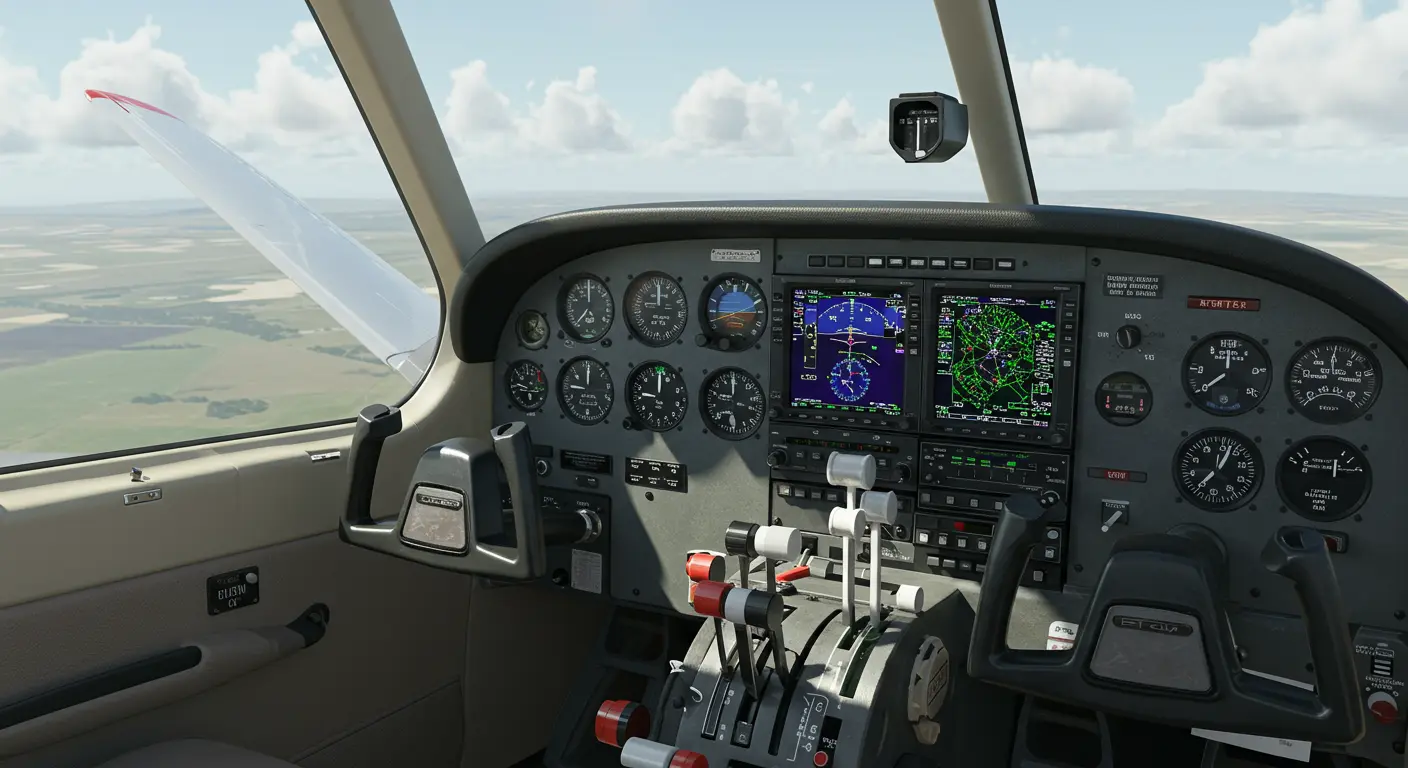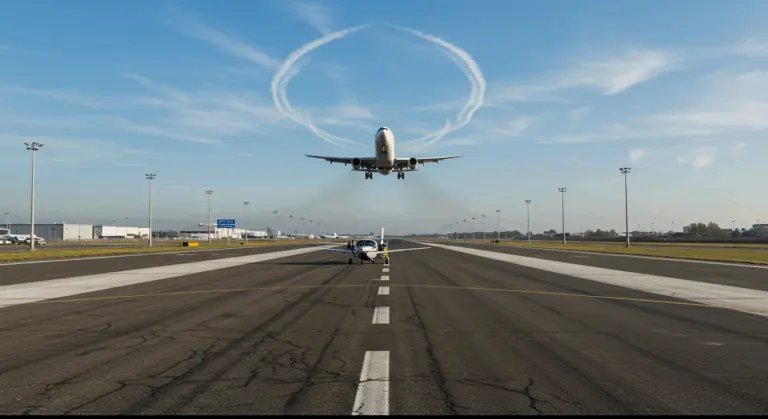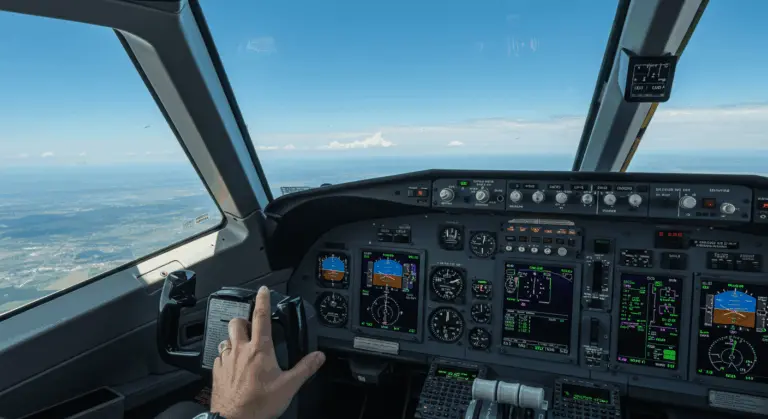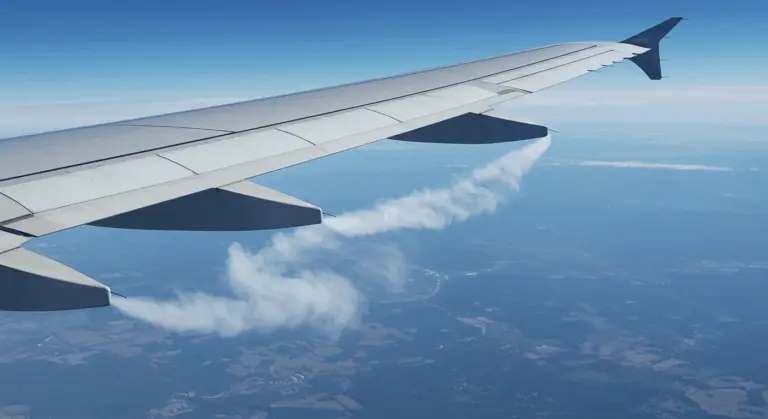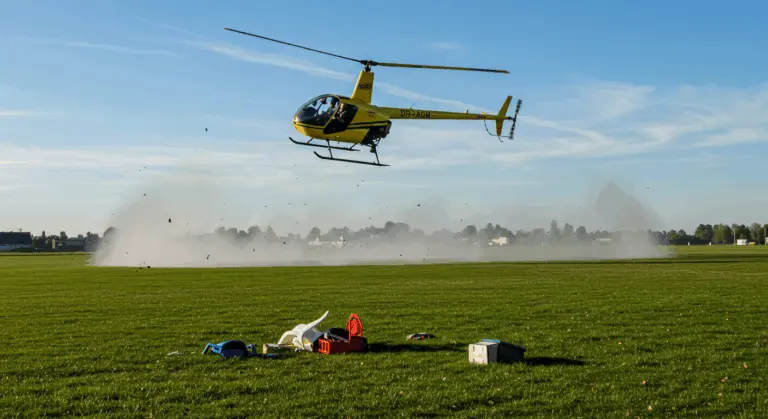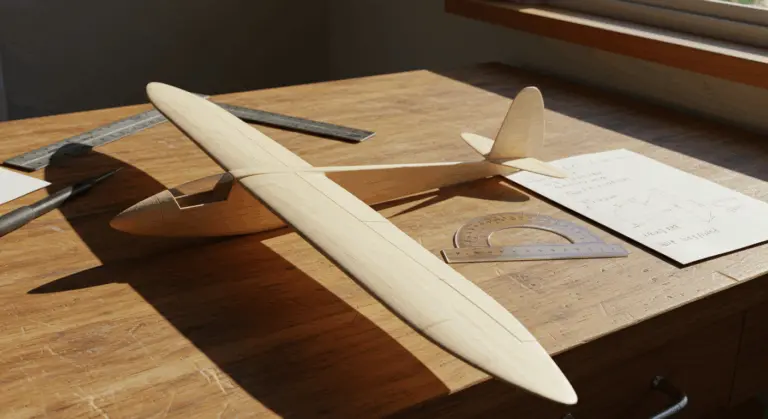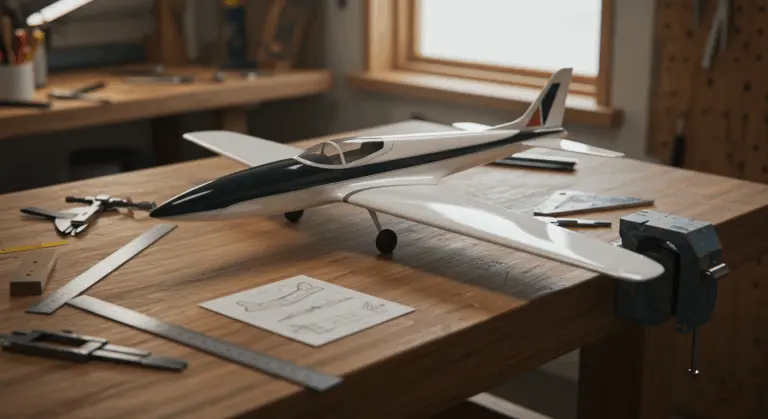Understanding Adverse Yaw in Aviation – A Comprehensive Guide
What is Adverse Yaw?
Adverse yaw is the natural tendency of an aircraft’s nose to yaw (turn) in the opposite direction of a roll. Here’s what happens: when a pilot banks the aircraft to the right, the nose initially swings left, creating an uncoordinated and inefficient flight condition.
This counterintuitive behavior happens because of the differential lift and drag forces generated across the aircraft’s wings during aileron operation.
To roll an aircraft to the right, the pilot raises the right aileron and lowers the left one. The lowered left aileron increases lift but also drag, causing the nose to yaw left—opposite to the intended right turn. This unwanted motion must be counteracted by the pilot or by aircraft design features to maintain coordinated flight.
Understanding this phenomenon is essential for pilots seeking to execute proper, coordinated turns while maintaining efficient, safe flight characteristics. Without proper compensation, it can lead to uncoordinated turns, increased drag, reduced performance, and potentially dangerous flight conditions.
Causes of Adverse Yaw
The fundamental cause lies in how ailerons alter the lift and drag characteristics of each wing.
The drag differential is especially noticeable because of induced drag’s unique behavior. Induced drag increases exponentially with lift, meaning the wing generating more lift (the one with the lowered aileron) experiences a disproportionate increase in drag. The physics behind this involves the pressure differential between the upper and lower surfaces of the wing, which creates wing tip vortices that contribute to induced drag.
Beyond drag differentials, another significant contributor involves the deflection of the lift vector during rolling motion. As the aircraft begins to roll, the lift vectors on each wing tilt in different directions. On the rising wing, the lift vector tilts forward, while on the descending wing, it tilts backward. This differential tilting of lift vectors further contributes to the yawing moment in the opposite direction of the roll.
The severity of adverse yaw varies significantly between aircraft designs and flight conditions.
Lift Vector Deflection During Rolling
Lift vector deflection represents another significant contributor to adverse yaw, working in tandem with the differential drag effect. This phenomenon occurs due to the dynamic changes in airflow patterns around the wings during rolling maneuvers.
When an aircraft initiates a positive roll (for example, rolling to the right), the left wing moves upward through the air while the right wing moves downward.
Meanwhile, the descending right wing experiences the opposite effect. As it moves downward, the relative airflow is deflected downward, tilting the lift vector forward. This creates an asymmetric condition where the rising wing’s lift vector pulls backward while the descending wing’s lift vector pushes forward. The net result is a rotation around the vertical axis that works against the intended direction of turn.
This lift vector deflection effect reaches its peak during the initial phase of a roll, when rolling rate is at its highest. The magnitude of this effect varies with the roll rate and the wing’s design characteristics, including aspect ratio and sweep angle. High-aspect-ratio wings (long and narrow) typically experience more pronounced lift vector deflection effects during rolling maneuvers, contributing to stronger adverse yaw tendencies in aircraft with such wing designs.
Induced Drag and Its Effects
Induced drag is a key aerodynamic force in the adverse yaw phenomenon.
As an aircraft’s wing generates lift, high-pressure air beneath the wing naturally curls around the wing tip toward the lower-pressure region above. This movement creates spiraling vortices that trail behind the wing tips during flight. These vortices represent energy that has been diverted from forward motion into a downwash field behind the aircraft, effectively wasting engine power and creating drag. The energy required to generate and maintain these vortices manifests as induced drag.
The relationship between induced drag and adverse yaw is straightforward: when ailerons are deflected for a roll, the wing generating more lift also creates significantly more induced drag. This drag imbalance is the primary cause of the adverse yawing moment.
Profile Drag Contribution
Profile drag is another important factor in the adverse yaw equation, distinct from the induced drag previously discussed.
Form drag emerges from the physical obstruction an aircraft presents to the airflow. Every surface that faces the relative wind creates pressure drag as air molecules collide with and flow around these surfaces. When ailerons are deflected during a rolling maneuver, the aileron that moves downward increases the effective camber of that wing section, altering its form and consequently increasing its form drag. Simultaneously, the upward-deflected aileron on the opposite wing reduces the effective camber, decreasing form drag on that side. This differential in form drag contributes to the adverse yaw moment.
Interference drag develops at junctions where different aircraft components meet—wing-fuselage connections, control surface hinges, and similar interfaces. The boundary layers of airflow around these components interact and create additional turbulence and pressure variations. During aileron deflection, these interference effects can become asymmetrical between the two wings, further contributing to the yawing moment opposite to the desired turn direction. The precise design of aileron hinges and their integration with the wing structure can significantly influence the magnitude of this contribution to adverse yaw.
Aircraft designers carefully consider profile drag characteristics when developing control surfaces. Modern aircraft often incorporate specialized aileron designs that minimize profile drag differences during deflection, thereby reducing their contribution to adverse yaw without compromising roll control effectiveness.
Minimizing Adverse Yaw
Pilots and aircraft designers use several effective methods to counteract adverse yaw:
-
Rudder Coordination: The primary pilot technique, involving applying rudder in the same direction as the roll to keep the aircraft’s nose aligned with the flight path.
-
Differential Ailerons: A design where the upward-moving aileron deflects more than the downward-moving one, creating more drag on the descending wing to help balance the yawing forces.
-
Frisé Ailerons: An aerodynamic design where the leading edge of the upward-deflected aileron protrudes into the airflow, creating precise, counteracting drag.
-
Spoilers: Control surfaces on the wing’s upper side that disrupt airflow to reduce lift and increase drag on the descending wing, which naturally assists the turn.
Yaw Stability and Aircraft Design
Yaw stability is a critical aspect of aircraft design that directly influences how effectively an aircraft can resist or manage adverse yaw.
Engineers designing for yaw stability must consider the size, shape, and placement of the vertical stabilizer relative to the aircraft’s center of gravity. A larger vertical tail surface generally provides stronger directional stability but may result in heavier control forces for the pilot. The distance between the vertical stabilizer and the center of gravity—known as the moment arm—also significantly impacts yaw stability. A longer moment arm creates stronger stabilizing moments that help counteract adverse yaw tendencies.
Contemporary aircraft designs frequently incorporate additional features to enhance yaw stability. Ventral fins, dorsal fins, and strakes can improve directional stability, particularly at high angles of attack where the main vertical stabilizer might become partially blanked by the fuselage. These design elements help maintain effective yaw control throughout the flight envelope, reducing the pilot’s workload in maintaining coordinated flight.
Roll and yaw dynamics create a complex design challenge. Engineers must balance the aircraft’s natural tendency to yaw against its roll rate sensitivity. Too much yaw stability can make an aircraft feel sluggish in turns, while insufficient stability may result in pronounced adverse yaw effects requiring constant rudder inputs. This balance between stability and maneuverability is one of the key compromises in aircraft design, with different solutions appropriate for different aircraft types and missions.
Wing design also plays an important role in yaw stability. Wing sweep, dihedral angle, and even airfoil selection influence how lift vectors change during rolling maneuvers. By carefully managing these design parameters, engineers can minimize the lift vector deflection that contributes to adverse yaw. Some high-performance aircraft incorporate variable geometry features that automatically adjust control surface relationships to maintain optimal handling characteristics across different flight regimes.
Aileron to Rudder Mixing Techniques
Aileron-rudder mixing is one of the most effective solutions for managing adverse yaw without demanding constant pilot intervention. This technique creates a mechanical or electronic linkage between aileron and rudder controls, automatically applying proportional rudder deflection whenever the pilot moves the ailerons. When the pilot initiates a roll to the right, for example, the system simultaneously applies right rudder input to counteract the natural tendency of the aircraft to yaw left, maintaining coordinated flight throughout the maneuver.
Modern aircraft use various systems to implement this mixing tailored to their complexity and intended use. In simpler general aviation aircraft, mechanical linkages may connect the aileron and rudder control circuits, providing a fixed ratio of rudder movement for a given aileron deflection. More sophisticated aircraft employ electronic flight control systems that can dynamically adjust the mixing ratio based on airspeed, altitude, and other flight parameters to optimize coordination across the entire flight envelope.
Aileron-rudder mixing offers benefits that extend far beyond merely countering adverse yaw. By reducing the pilot’s workload during turning maneuvers, these systems allow greater focus on other critical aspects of flight. This is particularly valuable during instrument flight conditions or complex flight operations where mental capacity might otherwise be stretched thin. Additionally, the consistent coordination provided by these systems can improve passenger comfort by eliminating the slipping or skidding sensations that often accompany poorly coordinated turns.
Effective aileron-rudder mixing requires careful calibration from aircraft designers. Too much rudder input relative to aileron deflection can cause overcompensation, while insufficient mixing fails to adequately address adverse yaw. Flight testing plays a crucial role in determining the optimal mixing ratios for each aircraft model. Some advanced systems even incorporate adaptive algorithms that learn from pilot inputs over time, gradually refining the mixing parameters to match individual flying styles while maintaining safe flight characteristics.
Effects of Adverse Yaw on Flight
Uncorrected adverse yaw creates multiple negative effects, ranging from inefficient performance to genuine safety hazards. The most immediate is an uncoordinated turn, where the aircraft’s nose swings opposite to the bank, creating a slipping or skidding sensation.
Key consequences include:
-
Reduced Performance: The uncoordinated flight path increases drag, which lowers fuel efficiency, climb rate, and overall range.
-
Degraded Control Authority: The aircraft may feel sluggish and respond poorly to control inputs, increasing pilot workload.
-
Passenger Discomfort: The slipping motion is often uncomfortable and can cause airsickness.
-
Increased Spin Risk: At low airspeeds, a severe uncoordinated turn can escalate into a spin, a critical safety risk, especially at low altitudes.
These effects become particularly pronounced during specific flight scenarios:
-
Crosswind Takeoffs: Aileron input to keep wings level can induce yaw that complicates directional control.
-
Climbing Turns: The aircraft is at a higher angle of attack, where induced drag and adverse yaw are stronger.
-
Landing Patterns: At lower speeds, precise control is critical, and adverse yaw can destabilize the aircraft’s approach path.
Understanding these effects helps pilots anticipate and properly manage adverse yaw through appropriate rudder coordination or by leveraging aircraft design features specifically implemented to minimize this phenomenon. Recognizing the situations where adverse yaw is likely to be most pronounced allows pilots to proactively apply the necessary control inputs to maintain coordinated, efficient, and safe flight throughout all phases of operation.
Conclusion
Adverse yaw is one of aviation’s fundamental aerodynamic challenges—one that every pilot must understand and master for safe, efficient flight. This phenomenon—where an aircraft’s nose yaws opposite to the intended turn direction—stems from the complex interplay of lift and drag forces created during aileron deflection. The wing generating more lift inevitably produces more induced drag, creating an unbalanced yawing moment that works against the pilot’s intentions.
This phenomenon manifests across various flight scenarios, stemming from the complex physics of differential drag, lift vector deflection, and profile drag interactions.
Aircraft designers have developed numerous effective solutions to minimize adverse yaw: differential ailerons, Frisé ailerons, spoilers, and automated aileron-rudder mixing systems. These design features significantly reduce—but rarely eliminate—the need for pilot intervention. The rudder remains the primary control for counteracting adverse yaw, allowing pilots to maintain coordinated flight through proper control input coordination.
For all pilots, mastering the skill to anticipate and counteract adverse yaw is essential.
Understanding and managing adverse yaw serves aviation’s primary goal: safe, controlled flight under all conditions. As with many aspects of aerodynamics, understanding the underlying physics allows pilots to work with—rather than against—the natural tendencies of their aircraft, resulting in smoother, more efficient, and safer operations throughout all phases of flight.

